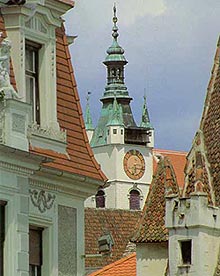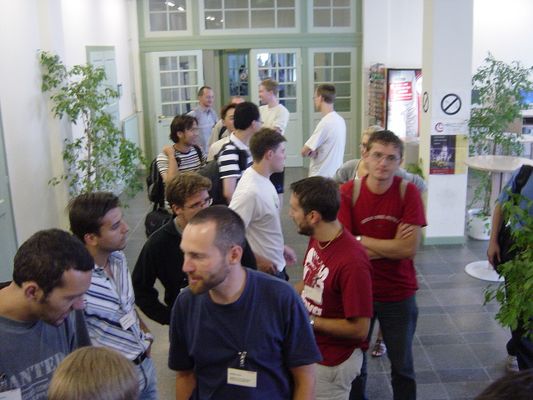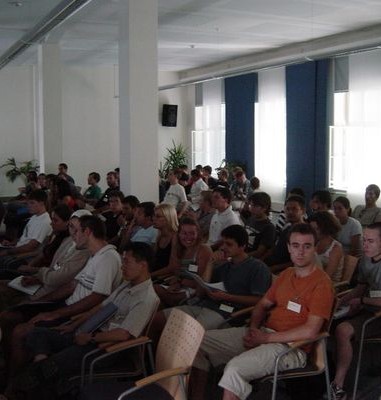 The 26th
CERN School of Computing took place at the Donau University, Krems an der
Donau, Austria from 24 August to 06 September. The
School was organized in collaboration with the Institut für
Hochenergiephysik (HEPHY) (Österreichische Akademie der Wissenschaften,
Vienna and the Donau Universität, Krems a.d. Donau, Austria.
Nine entities sponsored the School
The 26th
CERN School of Computing took place at the Donau University, Krems an der
Donau, Austria from 24 August to 06 September. The
School was organized in collaboration with the Institut für
Hochenergiephysik (HEPHY) (Österreichische Akademie der Wissenschaften,
Vienna and the Donau Universität, Krems a.d. Donau, Austria.
Nine entities sponsored the School
The programme of the School was organized around three themes: Algorithms, Grid Technologies and Software Technologies and consisted of 30 hours of lectures and 22 hours of hands-on exercises, delivered by 12 lecturers from 7 different organizations. Two evening lectures and two industrial presentations were given. The practical exercises were an important part of the programme and required a substantial computing infrastructure. A Grid server system was installed by CERN and the Institut für Hochenergiephysik (HEPHY), Vienna, and connected to the European Grid. This was the first time an HEP Grid node was set up in Austria. The 40 PCs used by the students were provided by the Donau University.
 68
students attended. The students were of 25 different nationalities (a new
record for CSCs) from 39 different Institutes. 73% of them were citizens of
a CERN member state, and 77% of them said their work was related to Particle
Physics.
68
students attended. The students were of 25 different nationalities (a new
record for CSCs) from 39 different Institutes. 73% of them were citizens of
a CERN member state, and 77% of them said their work was related to Particle
Physics.
Attendance rate was very high - above 95% on average - including at optional lectures, and was sustained until the end. The satisfaction questionnaire was, for the first time, fully electronic, and filled out by 46 students. 9% felt the programme was too heavy, 84% of the students felt it was well balanced, 95% felt the place to hold the school was most appropriate. The overall appraisal score, 3.58 (very poor = 0, excellent = 4), was one of the highest in the history of the school
 For the
second year running, an examination was offered at the end of school. 60
students registered for the exam and 53 passed. The examination was
designed and supervised by an evaluation committee, and implemented in the
form of computer-based multiple-choice questions. Each successful candidate
received a formal credit certificate from CERN.
For the
second year running, an examination was offered at the end of school. 60
students registered for the exam and 53 passed. The examination was
designed and supervised by an evaluation committee, and implemented in the
form of computer-based multiple-choice questions. Each successful candidate
received a formal credit certificate from CERN.
The major organization novelty was the systematic use of web-based interfaces for all interactions (e-questionnaire, e-examination, e-registrations to social activities, sports, …). A live web site became the main vehicle for communication, with and between the students.
In 2003, a proposal was made to the European Commission FP6 Marie Curie programme for grants to assist up to 25% of the students with living and travel allowance over four years. The proposal was accepted with a high mark (93.5 / 100) and flattering comments, at higher level of support than expected (grants to assist up to 100% of the students, and funds to cover a fraction of the organizational cost). The contract was signed at the end of 2003.
January 2004
For more, contact
François Fluckiger, Director,
CERN School of Computing, IT Department

